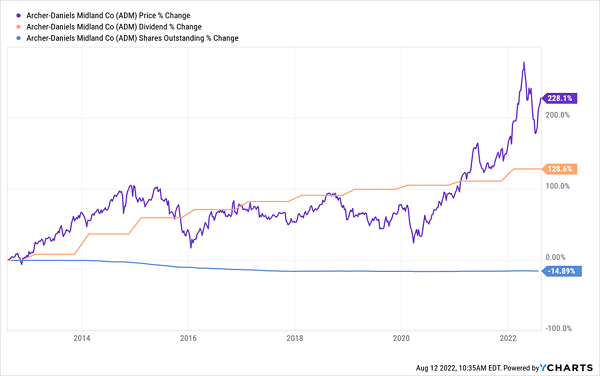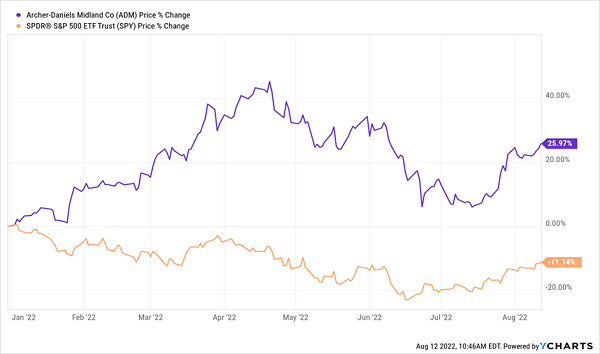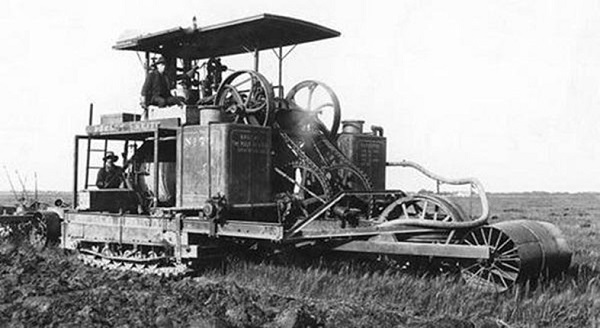Fed Chair Jay Powell is probably going to hike us straight into a recession—and even then, Jay still may not get the 2% inflation he’s hunting for.
Why? Because the supply-chain chaos we’re dealing with now is not going away. It’s part of a megatrend I expect to last the rest of this decade, and well beyond.
I’ll name two stocks we can tap to reap strong gains and fast-growing dividends from what many are calling the “end of globalization” in a moment. First, let’s dive into this critical shift, because it will drive, well, pretty well everything in our lives for years to come.
“Deglobalization” and Our Dividends
When you stop and think about it, it’s easy to see why our supply chain problems aren’t going away: Russia has invaded Ukraine, and President Xi is gazing across the Taiwan Strait, his generals holding live-fire “drills” closer and closer to Taiwan’s shores.
The world is fractured—and it will get worse.
Geopolitics author Peter Zeihan and others have dubbed this the end—or at least the decline—of globalization. The main thrust: with the geopolitical mess we’re in today, combined with the retrenchment of the US (once the guarantor of global security), means globalization is on borrowed time.
Nowadays, pretty well every country in the world has three options when it comes to trade, according to Zeihan:
- Team up with “friendly” nations (as Mexico, and Japan have done with the US).
- Make as many of the goods they need as possible at home.
- Just do without.
As dividend investors, we’re keenly interested in points 1 and 2, as both fuel onshoring and “friendshoring,” two megatrends that are only just getting on the public’s radar. We’ve been closely following these shifts in my Hidden Yields dividend-growth advisory for months.
The tariff wars of the late 2010s kicked off these changes. COVID-19, with its supply-chain snarls and PPE scavenger hunts, accelerated them.
Then came the war in Ukraine, and now the China/Taiwan tensions, fueled in part by Nancy Pelosi’s recent visit to the island nation. Throw in COVID flare ups, and it’s easy to see that the global supply chain will never be the same again.
So given all that, what the heck are we dividend investors—who are just looking to fund a comfortable retirement, for goodness sake—supposed to do?
We’ll zero in on “recession-resistant,” “inflation-resistant” dividend growers that provide the essentials the world will need in the years ahead. We also like companies that focus on developed markets (especially the US) and/or are “onshoring” into those places.
Here are two terrific examples of companies poised to profit as globalization rolls over and the global trading system we took for granted for decades continues to fracture.
ADM: At the Intersection of Rising Food Demand and Shaky Supply
Food is obviously pretty essential, and the numbers around our future food supply are pretty sobering: according to the UN Food and Agricultural Organization, global food demand will soar 70% by 2050.
Cast that against geopolitical events that are only likely to get worse (the Ukraine war, for example, has essentially taken the No. 2 wheat producer, Russia, and the No. 8 producer, Ukraine, offline), more droughts due to a warming planet and our fractured global supply chain, and our ability to meet soaring demand looks pretty shaky indeed.
You can also see the opportunity for stable countries that export crops, such as the US and Canada, as well as companies like ADM, which is a good way for dividend investors to tap into rising food demand.
The company operates 400 crop-procurement facilities and 270 processing plants across the globe, turning raw crops into supplements and ingredients for food makers. ADM also produces animal feed and runs a commodity-trading business that’s been profiting from higher prices and is likely to continue to do so over the long haul.
Right now, the stock is flashing not one but five signals we Hidden Yielders look for in a dividend play:
- A dividend whose growth is accelerating
- A share price that’s rising with the company’s payout
- Smartly timed share buybacks
- A low “beta” rating (showing low volatility), and
- Relative strength against the rest of the market.
Let’s take those first three points all at once, because they’re tied together.
If you’ve been reading my columns for a while, you know about the “Dividend Magnet.” It’s the very strong tendency for a company’s share price to track its dividend growth. This is one reason why we demand a payout that’s not only growing but accelerating. You can see this in action with ADM’s payout (in orange below), which has more than doubled in the last decade, pacing its share price (in purple) higher over that time.
ADM’s Dividend Drives Its Stock (With a Buyback Assist)

ADM’s buybacks (in blue), meanwhile, reduce the company’s share count, juicing its earnings per share and throwing a floor under the share price.
Next up, the 5-year beta rating, which is an indicator of the stock’s stability: right now, this number clocks in at 0.8, meaning ADM is 20% less volatile than the S&P 500, a feature that has a lot of appeal in the dumpster-fire market we’ve seen in 2022.
Which brings us to our final indicator that ADM could be ripe for buying now: it’s showing “relative strength” against the rest of the market. That simply means that the stock has momentum, and stocks that are on the rise tend to keep rising. ADM has done that in spades this year, soaring while the S&P 500 tanked.
ADM’s Relative Strength, Low Volatility on Display in ’22

Put it all together and you’ve got a stock primed to deliver rising income, strong price gains and “megatrend” growth potential through the rest of the decade!
Caterpillar: Onshoring Before Onshoring Was Cool
Caterpillar is the quintessential American success story: the Deerfield, Illinois–based heavy-equipment maker is nearing its 100th anniversary, having been founded back in 1925.
Let’s take a second here to tip our hat to co-founder Ben Holt’s “Caterpillar,” which he invented by replacing the wheels on his tractor design with treads in 1904, so the machines could traverse muddy fields:

Source: Holtcat.com
Caterpillar’s dividend is almost as old as the company itself: the payout started rolling out to investors in 1933 (in the depths of the Great Depression, no less), and CAT has hiked it every year for the last 28, earning itself a spot on the Dividend Aristocrats list.
The company has been expanding in the US over the last decade, opening new plants in Georgia, for example, and expanding its operation in West Fargo, North Dakota. And how’s this for a Dividend Magnet?
CAT’s Payout Doubles—and So Does Its Share Price

We’ve got plenty of reasons to expect CAT’s “magnet” to get stronger as countries build more of the infrastructure they need (read: roads, highways and railways) to support the growth of local supply chains. CAT also stands to benefit as farmers increase their crop yields to benefit from (inevitably) rising crop prices in the coming years.
Revealed: 7 “Great Reset” Stocks Set to Gain 15% a Year—Right Through the 2020s
As I said, my team and I have concluded that the end of globalization isn’t a matter of “if” but “when.” In fact, I’d go one better and say the “when” is “now!”
It’s happening right before our eyes.
We’ve dubbed this and the other unprecedented shifts in the economy the “Great American Reset.” And we’ve compiled a list of 7 more stocks that, like ADM and CAT, are tied into these ground-shaking changes. All 7 hand their profits to us in the form of accelerating dividends and buybacks that, together, drive their share prices higher.
Don’t miss your chance to protect and grow your wealth in today’s uncharted economy. Click here and I’ll tell you more about our plan to reap big dividends and upside as globalization dies out. I’ll also reveal how to get details (names, tickers and more) of all 7 of these “inflation-resistant,” “recession-resistant” stocks in an exclusive Special Report.
